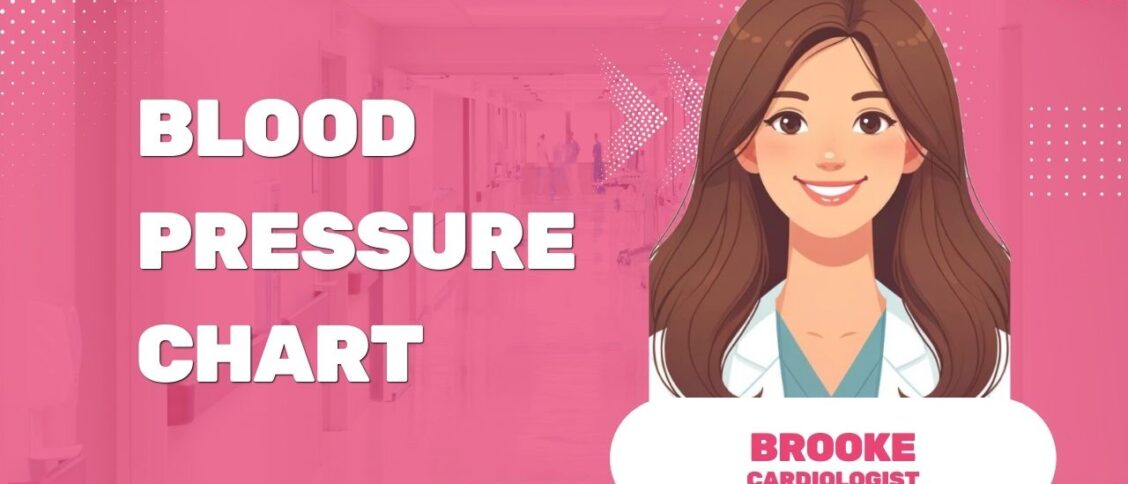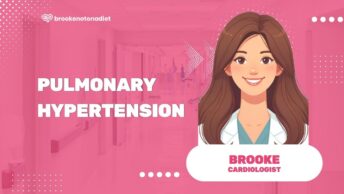Blood pressure, often seen as a key health indicator, is the pressure your blood applies against your artery walls as it circulates through your body.
Have you ever wondered about your blood pressure readings? Well, the American Heart Association has put together a comprehensive blood pressure chart to guide you on this health journey.
This chart draws from a wealth of studies, including a significant 2018 study by Muntner et al. in the Journal of Hypertension. It suggests that blood pressure benchmarks should consider both ambulatory and at-home readings.
Why is understanding your blood pressure so important? It’s often dubbed the silent killer because high and low readings can sneakily pose serious health risks without any obvious symptoms.
To get a full picture, it’s essential to know about the primary stages of blood pressure:
- Normal
- Elevated
- High
- Hypertensive crisis
In milder cases, doctors often recommend lifestyle changes over medications to manage blood pressure effectively.
How do we measure blood pressure? A sphygmomanometer, an instrument with an inflatable cuff and a measuring device, is used. The cuff, wrapped around the upper arm, inflates to halt blood flow. As it deflates, the device records the arterial wall pressure, showing systolic (maximum) and diastolic (minimum) pressure readings.
Devices like the Oxiline Pressure X Pro and CheckMe BP2 are noteworthy in measuring this critical health metric. Their significance is so great that many health experts recommend a downloadable or printable version of the blood pressure chart, available at the end of this article.
What is a blood pressure chart?
A blood pressure chart is a key tool, turning numerical readings into a clear snapshot of your heart health. It categorizes blood pressure into different ranges: low, normal, and high. The latest ranges from the American Heart Association are as follows:
| Range (in mmHg) | Clinical term | Stage |
| Less than 120/less than 80 | Normal blood pressure | Normal/Ideal Blood Pressure |
| 120/80 – 129/80 | Elevated Blood Pressure | Pre-Hypertension |
| 130/80 – 139/89 | Stage 1 Hypertension | High Blood Pressure |
| 140/90 – 180/120 | Stage 2 Hypertension | High Blood Pressure |
| Above 180/120 | Hypertensive Crisis | Very High Blood Pressure |
This chart is a conversation starter between patients and doctors, aiding in understanding treatment options and promoting heart health awareness. Note that it doesn’t address low blood pressure, which can also require emergency care.
Interestingly, low blood pressure emergencies are rarer than hypertension cases, with the body often giving warning signs before becoming critical.
A significant update from the American Heart Association redefines high blood pressure at 130/80 mmHg, down from the previous 140/90 mmHg. This change comes after finding that high blood pressure symptoms start appearing at this lower threshold.
Dr. Paul K. Whelton, a leading figure in these guidelines, warns about the risks associated with blood pressure in the 130-139/80-89 mmHg range:
“At these levels, you’ve essentially doubled the risk of cardiovascular complications relative to individuals with normal blood pressure.”
He adds:
“Our aim is to be forthright. Recognizing this doubling in risk is crucial. It doesn’t necessarily prescribe medication, but it certainly raises a cautionary flag, urging individuals to focus on non-pharmacological measures to reduce their blood pressure.”
However, global standards still recognize the older range, as normal blood pressure readings vary greatly due to factors like lifestyle, diet, climate, and regional differences.
Knowing how to interpret a blood pressure chart is literally a matter of life and death. Let’s break down what each number means and why it matters.
How to read a blood pressure chart?
Understanding your blood pressure involves looking at two numbers, typically separated by a slash, like 120/80 mmHg. The first number is your systolic blood pressure, and the second is your diastolic blood pressure.
These numbers are crucial as they offer insights into your heart health, helping detect and manage potential cardiovascular issues early.
Let’s dive into what systolic and diastolic readings are and how they differ.
What is the difference between systolic and diastolic blood pressure?
Ever wondered what the numbers in your blood pressure reading mean? There’s systolic and diastolic blood pressure, and they’re quite different. Systolic pressure is the peak pressure when your heart pumps blood, while diastolic pressure is the lowest when your heart rests between beats.
Picture a blood pressure reading like 120/80 mmHg. The first number, systolic, measures the pressure during heartbeats. A normal systolic reading is under 120 mmHg. High systolic pressure can hint at heart strain. The second number, diastolic, gauges the pressure when your heart relaxes. It’s considered normal below 80 mmHg and indicates how well your arteries relax.
Researchers from Tulane University pointed out in their study in the Journal of Hypertension that unusual readings in either systolic or diastolic pressures could signal health problems. So, it’s crucial to understand that both numbers matter, not just the higher systolic one.
You’ve probably seen blood pressure expressed in mmHg. It’s the standard way to measure blood pressure, and grasping its meaning can deepen your understanding of heart health.
What is the meaning of mmHg in blood pressure readings?
MmHg, short for millimeters of mercury, is how blood pressure readings are expressed. It dates back to the days when mercury sphygmomanometers were the gold standard, as discussed by Dr. Gbenga Ogedegbe and Dr. Thomas Pickering in their book “Cardiology Clinic”.
MmHg measures how high blood pressure can push mercury in a manometer or sphygmomanometer. A blood pressure reading presents two pressures: systolic (during a heartbeat) and diastolic (between beats). They’re typically shown as one number over the other, like 120/80 mmHg, in millimeters of mercury.
This measurement offers a uniform way for healthcare professionals to assess and monitor blood pressure, aiding in the diagnosis and management of cardiovascular issues.
Although Pascal (Pa) is the standard SI unit for pressure, and kPa is often used, mmHg remains the primary unit for blood pressure. But how do kPa and mmHg relate?
Is kPa the same as mmHg when measuring blood pressure?
No, kPa (kilopascals) and mmHg (millimeters of mercury) aren’t the same. They’re both pressure units but used in different contexts. Gianfranco Parati and their team discussed in their 2004 paper, “Blood Pressure Measurement in Research and Clinical Practice”, the relevance of mmHg over kPa, especially in clinical settings.
One mmHg is approximately equal to 0.133 kPa. In clinical settings, blood pressure is mostly measured in mmHg, while kPa might be seen in scientific or engineering areas.
To convert from mmHg to kPa, multiply the mmHg value by 0.133. To go from kPa to mmHg, divide by 0.133 or multiply by 7.501. So, a blood pressure of 120/80 mmHg equals about 15.99/10.66 kPa.
Remember, clinical blood pressure is typically not measured in kPa, and mmHg is the globally recognized standard for blood pressure readings.
What are the blood pressure ranges?
Did you know that the American Heart Association categorizes blood pressure into five key levels? This helps both individuals and healthcare providers gauge cardiovascular health. The levels are: Normal, Elevated, High Blood Pressure (Hypertension) Stage 1 and Stage 2, and Hypertensive Crisis. But there’s more to it. In clinical settings, doctors also consider hypotension (low blood pressure) and severe hypotension to assess cardiac health. Let’s explore each category and what it means for your heart.
Very Low Blood Pressure (Severe Hypotension)
Severe Hypotension, or Very Low Blood Pressure, is when blood pressure plummets way below normal. This can interfere with blood flow to vital organs and is a cardiac emergency. A common benchmark for severe hypotension is a reading lower than 80/50 mmHg. Key aspects of severe hypotension include:
- Causes: This condition can arise from dehydration, severe blood loss, heart disease, endocrine disorders, sepsis, and some medications.
- Symptoms: Look out for dizziness, fainting, fatigue, nausea, blurred vision, and concentration difficulties.
- Dangers: It’s critical and can be life-threatening, potentially starving vital organs like the heart and brain of blood. Immediate action, like calling 911, is essential.
- Treatment: Depending on the cause, treatment may involve medication, dietary changes, and addressing underlying medical conditions.
- Prevention and management: Staying hydrated, eating a balanced diet, regularly monitoring blood pressure, and managing any underlying conditions can help.
Low Blood Pressure (Hypotension)
Hypotension, or Low Blood Pressure, is when readings are consistently below the normal range but not as severe as severe hypotension. It’s considered low if the readings are under 90/60 mmHg but above 80/50. While often benign, it can cause problems if it leads to inadequate tissue oxygenation. Here’s what you should know about hypotension:
- Causes: Causes include dehydration, heart and endocrine problems, significant blood loss, nutritional deficiencies, and certain medications.
- Symptoms: Dizziness, lightheadedness, fainting, blurred vision, fatigue, nausea, and concentration issues are common.
- Dangers: It can be dangerous if it leads to insufficient blood flow to the organs and brain. In some cases, it’s a medical concern needing urgent attention.
- Treatment: Treatment varies and might include medication, dietary supplements, and lifestyle changes under medical supervision.
- Prevention and management: Drinking fluids, eating small frequent meals, avoiding alcohol, standing up slowly, and managing underlying conditions can help.
Normal Blood Pressure
Normal Blood Pressure is when your levels are just right, promoting efficient blood circulation. A normal reading, as per Harvard Health Publications and the AHA, is less than 120/80 mmHg. Maintaining this level is key to cardiovascular health, reducing strain on the heart and arteries. To keep your blood pressure normal:
- Maintenance: A heart-healthy lifestyle, including a balanced diet and regular exercise, is beneficial.
- Monitoring: Regular checks can help spot any deviations early.
- Medical guidance: Regular doctor visits are important, especially if there are cardiovascular risk factors.
Elevated Blood Pressure (Prehypertension)
Prehypertension is when blood pressure is higher than normal but not high enough to be hypertension. This stage, as a 2011 study by Zhang & Li notes, is a precursor to hypertension. Prehypertension is typically when readings are between 120/80 mmHg and 129/80 mmHg. Here’s what you need to know:
- Causes: Family history, high-sodium diet, lack of physical activity, obesity, and excessive alcohol intake are common causes.
- Symptoms: Often symptomless, which makes monitoring vital.
- Dangers: It can progress to hypertension, increasing the risk of heart disease and stroke.
- Treatment: Lifestyle changes like a healthier diet, regular exercise, reduced sodium intake, and limited alcohol are recommended.
- Prevention and management: Healthy living, stress management, regular exercise, and blood pressure monitoring can help manage prehypertension.
High Blood Pressure (Stage 1 Hypertension)
Stage 1 Hypertension is when blood pressure consistently ranges from 130-139 mmHg systolic or 80-89 mmHg diastolic. This stage is an early warning for cardiovascular issues. What to know about Stage 1 Hypertension:
- Causes: Excessive salt intake, obesity, genetics, age, and inactivity are common. Stress, kidney disease, and certain meds also play a role.
- Symptoms: Usually symptomless. Some may experience headaches, breathlessness, or nosebleeds.
- Dangers: It increases the risk of heart disease, stroke, and kidney problems. Not an emergency, but it shouldn’t be ignored.
- Treatment: Lifestyle changes and possibly medications, depending on risk factors.
- Prevention and management: Reducing salt, maintaining a healthy weight, exercising, limiting alcohol, and managing stress are key. Regular check-ups are essential.
High Blood Pressure (Stage 2 Hypertension)
Stage 2 Hypertension is more severe, with readings consistently at 140/90 mmHg or higher. Immediate medical care is crucial. Key points about Stage 2 Hypertension:
- Causes: Similar to Stage 1 but can also include chronic kidney disease and hormonal disorders.
- Symptoms: Headaches, vision issues, chest pain, difficulty breathing, irregular heartbeat, and fatigue might occur.
- Dangers: Significantly increases the risk of heart attack, stroke, and heart failure. Immediate medical care is necessary.
- Treatment: Aggressive treatment with blood pressure-lowering medications and lifestyle changes.
- Prevention and management: Same as Stage 1, with close monitoring and adherence to treatment.
Hypertensive Crisis
A Hypertensive Crisis is when blood pressure skyrockets above 180/120 mmHg. It’s a medical emergency requiring immediate attention. Here’s what you should know:
- Causes: Skipping meds, kidney failure, heart attack, stroke, adrenal gland issues, certain drugs, and supplements can trigger it.
- Symptoms: Severe headache, shortness of breath, chest and back pain, numbness, speech difficulties, vision problems, and severe anxiety are common.
- Dangers: Can lead to life-threatening complications like pulmonary edema, brain swelling, or organ damage. If organ damage is involved, it’s an emergency.
- Treatment: Hospitalization and IV medications are required. Treatment depends on whether there’s organ damage.
- Prevention and management: Regular blood pressure monitoring, sticking to medications, and avoiding triggers are crucial. Immediate medical attention is needed for extreme readings or symptoms.
What is normal blood pressure by age and gender?
Did you know that normal blood pressure isn’t one-size-fits-all? It can differ based on age, gender, and other factors. A 2001 study in the Journal of Hypertension by AHA highlighted these variations. While 120/80 mmHg is a common benchmark, these ranges can shift across different age groups, genders, and even ethnic backgrounds.
What is a normal blood pressure range for men?
For men, a healthy blood pressure is typically under 120/80 mmHg, but this can vary with age, lifestyle, and health status. Here’s a quick look at the normal ranges across different age groups:
- Young adults (20s-30s): Around 120/80 mmHg, considered the healthy standard.
- Middle-aged (40s-50s): Slightly above 120/80 mmHg, a common average for this age.
- Senior men (60s and older): Around 140/90 mmHg or higher, with an increase in systolic pressure being common.
What is a normal blood pressure range for women?
For women, the ideal blood pressure is also less than 120/80mmHg, subject to age and health variations. Dr. Jennifer Wong, M.D., noted the increased cardiovascular risks in women with systolic pressures over 110 mmHg. Women’s blood pressure is also influenced by hormonal changes during pregnancy and menopause. Here’s a breakdown:
- Young adults (20s-30s): Generally around 120/80 mmHg.
- Middle-aged (40s-50s): Around 120/80 mmHg, with possible hormonal fluctuations.
- Senior women (60s and older): Around 140/90 mmHg or higher, similar to men in this age group, with an increased risk of hypertension.
What is a normal blood pressure range for children?
Children’s blood pressure starts lower and rises as they grow. It’s important to compare their readings with age, sex, and height percentiles. Here’s a general guide:
- Infants (0-12 months): 75/50 to 90/65 mmHg.
- Toddlers (1-2 years): 80/50 to 100/70 mmHg.
- Preschoolers (3-5 years): 85/55 to 105/75 mmHg.
- School-age (6-9 years): 90/60 to 120/80 mmHg.
- Pre-teens (10-12 years): 95/65 to 125/85 mmHg.
- Teenagers (13-18 years): 100/70 to 130/90 mmHg.
What is a normal blood pressure range for young adults?
Young adults, typically in their late teens to early 30s, should aim for a blood pressure below 120/80 mmHg. This age group is expected to have the healthiest levels, with risks increasing as they age. Stress, diet, physical activity, and genetics are all influencing factors. Here’s what to consider:
- Normal Blood Pressure: Below 120/80 mmHg.
- Elevated Blood Pressure: Systolic 120-129 / Diastolic <80 mmHg.
- Hypertension Stage 1: Systolic 130-139 / Diastolic 80-89 mmHg.
- Hypertension Stage 2: Systolic ≥140 / Diastolic ≥90 mmHg.
What is the normal blood pressure range for the elderly?
For those 65 and older, a normal blood pressure is ideally below 120/80 mmHg. However, due to age-related changes, readings up to 140/90 mmHg might be acceptable for some without complications. Always consult healthcare professionals for personalized advice. The categories are:
- Normal Blood Pressure: Below 120/80 mmHg.
- Elevated Blood Pressure: Systolic 120-129 / Diastolic <80 mmHg.
- Hypertension Stage 1: Systolic 130-139 / Diastolic 80-89 mmHg.
- Hypertension Stage 2: Systolic ≥140 / Diastolic ≥90 mmHg.
What is a normal blood pressure range during pregnancy?
During pregnancy, blood pressure should ideally be less than 120/80 mmHg. However, it can fluctuate due to physiological changes. Regular monitoring is vital. The ranges are:
- First Trimester: Below 120/80 mmHg.
- Second Trimester: Often decreases.
- Third Trimester: May return to first trimester levels or slightly higher.
- Elevated Blood Pressure: Systolic 120-129 / Diastolic <80 mmHg.
- Hypertension: At or above 140/90 mmHg.
- Preeclampsia: High blood pressure, often arising after the 20th week of pregnancy.
What is an average blood pressure by race/ethnicity?
Blood pressure averages can differ by race/ethnicity due to genetics, socioeconomic factors, diet, and healthcare access. Here are some findings:
- White Americans: Systolic: 135.9 / Diastolic: 72.8 mmHg.
- Hispanic Americans: Systolic: 139.6 / Diastolic: 76.1 mmHg.
- Black Americans: Systolic: 141.0 / Diastolic: 76.6 mmHg.
- Asian Americans: Systolic: 140.3 / Diastolic: 76.3 mmHg.
- Others: Systolic: 134.7 / Diastolic: 75.8 mmHg.
What is normal blood pressure for pets?
Pets also have blood pressure norms, which vary by species. Here’s a quick overview:
- Dogs: 110-160/60-100 mmHg.
- Cats: 120-170/55-100 mmHg.
- Birds and Exotic Pets: Varies widely, with limited research available.
Why is it Important to Monitor Blood Pressure?
Have you ever wondered why keeping an eye on your blood pressure is so crucial? Monitoring blood pressure is like having a window into your heart health. It’s incredibly important for several reasons:
- Early Detection: Catching hypertension or other heart issues early, even before symptoms show up, is possible with regular blood pressure checks. Early detection means timely action, reducing the risk of more serious problems.
- Assessing Treatment Efficacy: If you’re on blood pressure medication, monitoring helps to make sure the treatment works and allows for necessary adjustments.
- Preventing Serious Health Issues: High blood pressure left unchecked can lead to heart attacks, strokes, kidney disease, and more. Regular checks help prevent these complications.
- Understanding Risk Factors: By keeping track of your blood pressure, you can see how your lifestyle choices affect your heart.
- Managing Other Health Conditions: If you have diabetes, kidney disease, or certain heart conditions, monitoring blood pressure is part of managing these conditions.
- Avoiding Hypertensive Crisis: Extremely high blood pressure can lead to a hypertensive crisis needing emergency treatment. Regular monitoring can help prevent this.
- Maintaining Optimal Health: Regular checks provide insights into your cardiovascular health, even if you’re not at risk of hypertension.
- Encouraging Lifestyle Modifications: Seeing patterns in your blood pressure readings can motivate you to make healthy changes, like improving your diet, exercising, and managing stress.
How to Take Blood Pressure at Home?
Wondering how to check your blood pressure from the comfort of your home? Here’s how:
- Choose a Monitor: Pick a reliable blood pressure monitor like the Oxiline Pressure X Pro or CheckMe BP2.
- Get Comfortable: Sit at a table, with your arm at heart level. Keep your feet flat and your back supported.
- Position the Cuff: Put the cuff on your upper arm, making sure it fits just right.
- Relax First: Wait for about 5 minutes before starting your reading for the best accuracy.
- Measure: Turn on your monitor and take a few readings, one minute apart. Then, average them out for the most accurate result.
Doing it right ensures you get readings as good as your doctor’s.
What are the Best and Most Accurate Blood Pressure Monitors?
Looking for the best blood pressure monitors for accurate readings at home? Oxiline, CheckMe, and QardioArm are top choices. Here’s a quick comparison:
- Oxiline Pressure X Pro: Offers clear blood pressure ranges, measures heart rate and pulse accurately, and includes a schedule chart for future readings.
- Checkme BP2 and BP2A: Known for their innovative design, Bluetooth connectivity, and simple one-button start, these devices also provide BP and ECG info.
- QardioArm: Tracks irregular heartbeats, provides data in visual forms like graphs and charts via a mobile app, and connects to various hand devices.
Oxiline Pressure X Pro is a standout choice for its innovative features, and CheckMe products are great for those wanting comprehensive cardiac health coverage.
How to Lower Blood Pressure Naturally?
Interested in natural ways to lower your blood pressure? Consider the following strategies:
- Dietary Changes: Cut down on sodium, choose low-sodium options, eat potassium-rich foods like bananas, up your fiber intake with whole grains, fruits, and vegetables, and consider the DASH diet.
- Physical Activity: Aim for 150 minutes of moderate or 75 minutes of vigorous aerobic activity weekly, plus strength training twice a week.
- Lifestyle Choices: Limit alcohol and caffeine, manage stress, ensure enough sleep, and quit smoking.
- Stay Hydrated: Drinking plenty of water is key.
- Natural Supplements: Consider supplements like omega-3 fatty acids, garlic, and flaxseed. Always check with a healthcare professional first.
Remember, understanding your baseline blood pressure figures is crucial on this journey.
Where to Find a Printable Blood Pressure Chart to Monitor Your Readings?
In our digital world, having a physical tool for health management can be incredibly helpful. A printable blood pressure chart is perfect for tracking your readings over time.
Whether it’s for your own use, sharing with your doctor, or helping a family member, access to these charts can be very beneficial. To get your own printable chart, just subscribe to our newsletter and receive it directly in your inbox.







